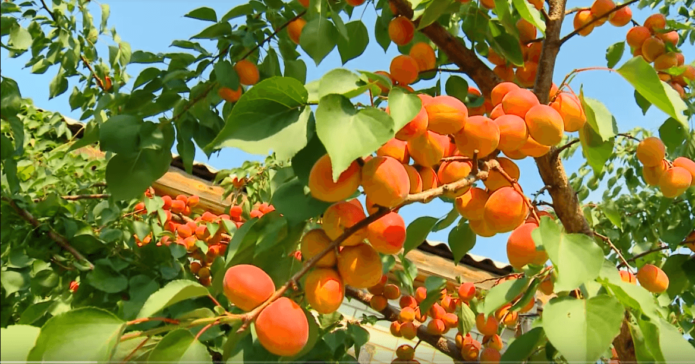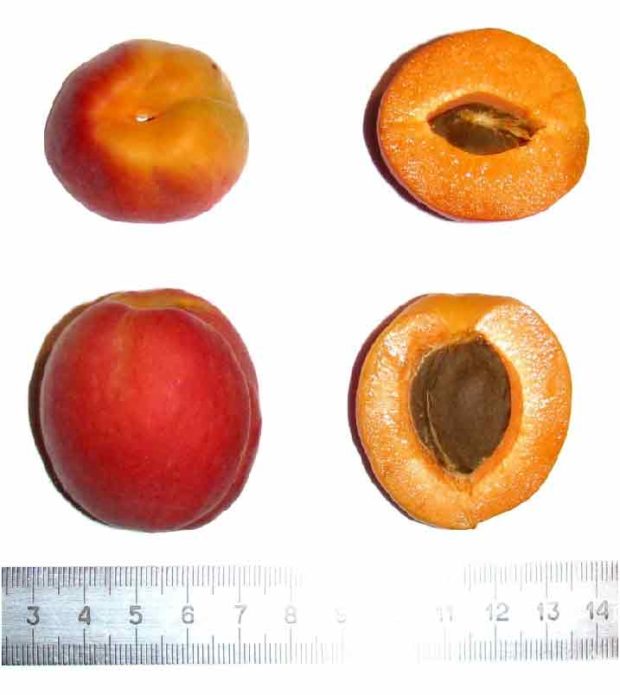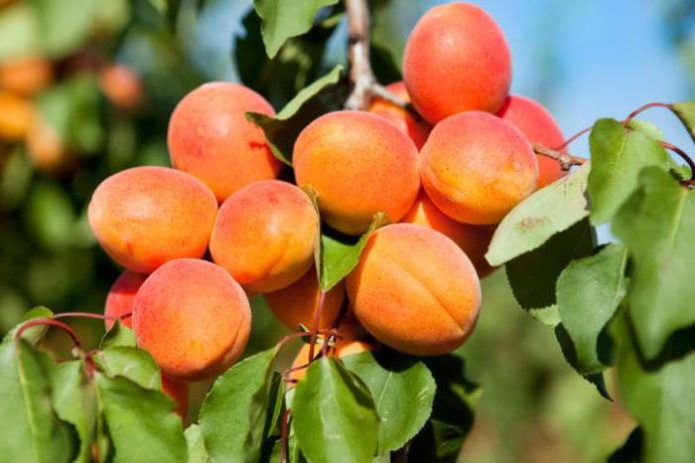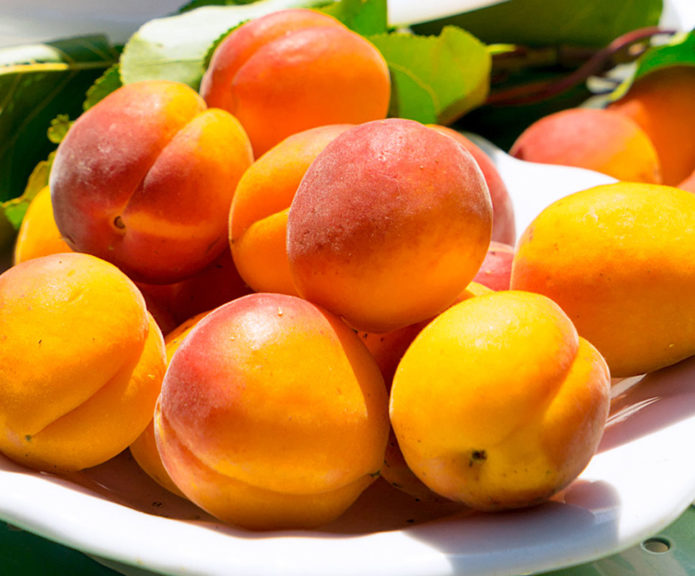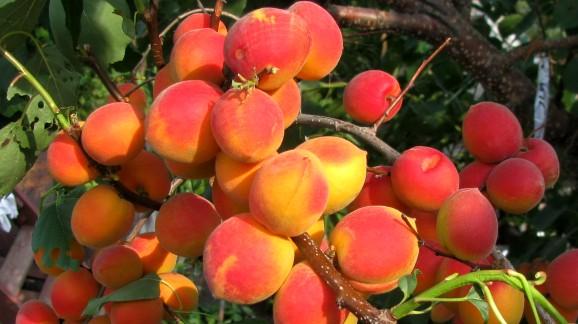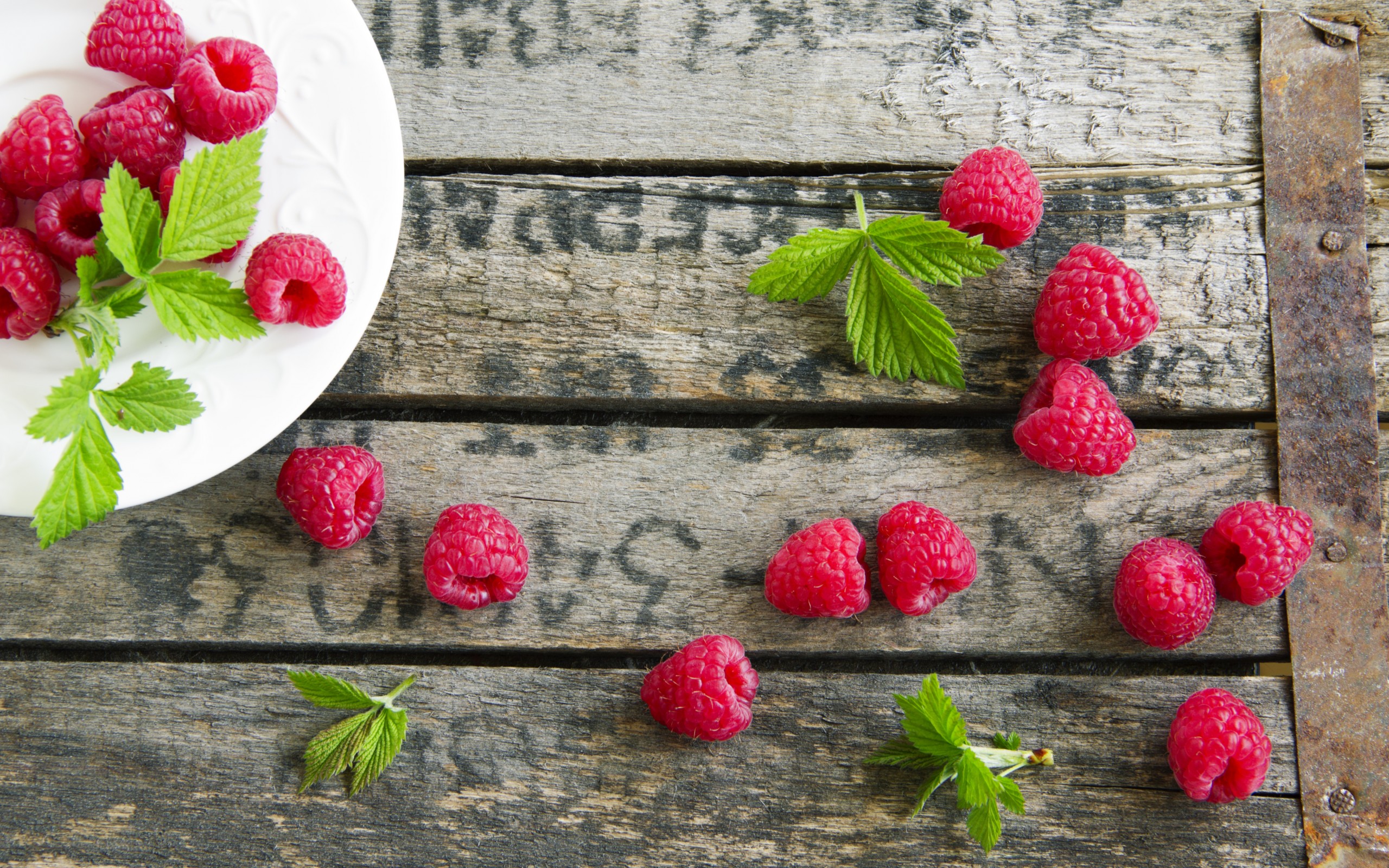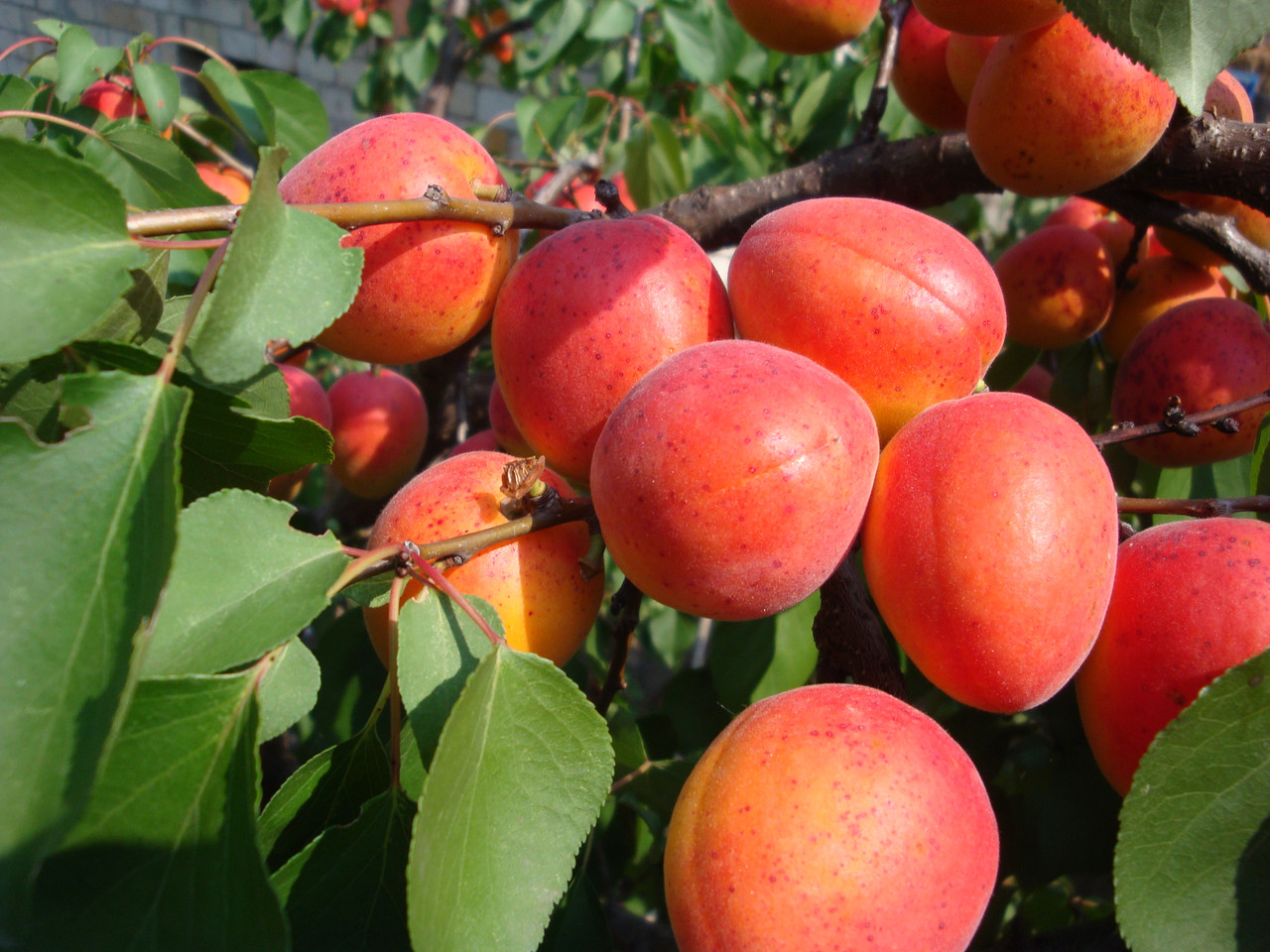Thanks to the efforts of breeders, a thermophilic crop - apricot, can now be successfully grown even in the northern regions. The new variety under the sonorous name Saratov Ruby is distinguished by its rare resistance to subzero temperatures. Due to this quality, as well as resistance to diseases and annual fruiting, the variety becomes a promising crop for commercial cultivation.
Content
How the Saratov Ruby variety was created
The apricot variety Saratov Ruby appeared thanks to a man who has been acclimatizing stone fruit crops for more than 30 years for the difficult climatic conditions of the central region of Russia. His name is A. M. Golubev. In 2010, he registered a new variety, which in 2015 was included in the State Register for the Lower Volga region.
They worked on the creation of new items for a long time - about 30 years. Numerous experiments culminated in the crossing of a hybrid of Manchurian and common apricot with a seedling of a Central Asian variety called Pharaoh, as a result of which the Saratov ruby was born. From one parental form - Pharaoh, he inherited resistance to moniliosis, from the second - frost resistance.
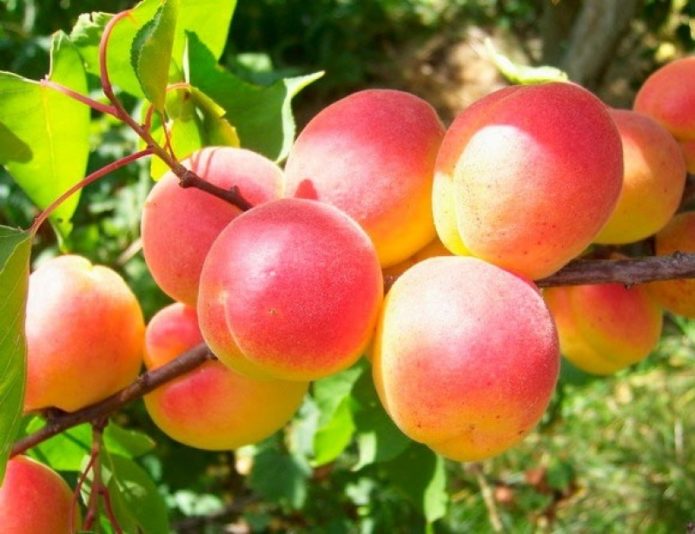
The fruits of the Saratov ruby are resistant to moniliosis, and the tree itself perfectly tolerates low temperatures
Description of apricot Saratov ruby
The culture is characterized by rapid growth at a young age. But the plant itself cannot be called tall, it has rather average sizes - 4 - 5 m... The tree is crowned with a spreading, medium-leafy crown of a spherical shape. The bark of the trunk is slightly brown, with traces of peeling. Young branches are straight, medium, smooth, brownish brown. There are few small tubercles, called lenticels, they are small and stand out against the dark background of the bark in a lighter yellow-gray color. The leaf is medium in size, broadly rounded, with a long pointed tip and a rounded base. Dyed dark green. Surface without pubescence, shiny, smooth. The edge of the leaf is decorated with fine crenellation. The plate bends downward. The petiole is of medium length. Flowers with white petals, small size, single growing. Fruits are tied on annual shoots, spurs and fruit twigs.
The fruits are very attractive, according to this indicator, the variety is given a solid 5. Average weight 42 g, maximum fetal weight 66.7 g. Apricots are elliptical in shape and medium in size. The main light orange color is almost completely covered by the indistinct carmine blush. The velvety skin is somewhat rough, it is difficult to remove from the fruit. The pulp is characterized by an orange color and a pronounced aroma. It is tender in consistency, medium juiciness. The juice is practically discolored. The taste of apricot pulp is sweet and sour. Average assessment by tasters - 4.5 points... The stone is flat, slightly pointed, with a smooth surface, well separated from the pulp. The size is small, only 3.6% of the total weight of the fetus.There are only minor traces of bitterness in the core.
The content of insoluble and soluble substances in fruits - table
| Substances | How much is contained in 100 g |
| Dry matter | 14,2% |
| Sugar | 8,5% |
| Acid | 1,5% |
| Pectin substances | 1,33% |
| Vitamin C | 12.3 mg /% |
Characteristic
Apricot Saratov Ruby can be called a unique variety, because it has so many advantages.
- in a grafted seedling, the fruiting period begins quite early - after 2 - 3 years;
- fruits ripen in medium terms, almost simultaneously. In the middle of summer, around 15 - 20 July, you can start harvesting;
- the yield is stable, from 95 to 115 kg can be harvested annually from one tree;
- a long, deep dormant period makes the tree insensitive to thaws that can come suddenly in mid-February. This quality is considered a hallmark of the variety.;
- frost resistance is amazing, which makes it possible to grow the variety in a region with unstable climatic conditions. Wood can withstand up to -42 ° С, and fruit buds are able to withstand frosts down to -36 ° С;
- the adaptability of the variety allows it to be grown in various places, for example, in the Moscow region, Voronezh, Chelyabinsk;
- the culture is resistant to heating;
- immunity is excellent. The variety is highly resistant to moniliosis in various forms - both to fruit rot and to monilial burn of flowering branches, and the resistance of fruits to clasterosporium makes them especially attractive;
- fruits are not prone to cracking, therefore damp weather during fruit ripening will not affect their quality;
- if the harvest is kept at a temperature of + 5 ° C, then the shelf life is more than 1 month. During this period, fruits do not lose their taste and marketability;
- excellent transportability - 5 points.
Pollinators
The variety is partially self-fertile. This means that the harvest will start in any case. But its quality will leave much to be desired. In order for the fruits and yield to show their maximum, it is recommended to plant pollinator varieties in a pair with the Saratov ruby:
- of the most delicious, you can use Lakomka and Dessertny Golubeva;
- for more northern regions, where frosts drop below -35 ° С, Northern Triumph, Zhigulevsky souvenir, Manitoba 604 are suitable;
- The most reliable is the Schedry apricot variety.
Purpose of fruits
Apricot fruits Saratov Ruby are versatile in use. They will bring the most benefits in their natural form, as they are full of vitamins and nutrients. But for a long time, the fruits are not able to be stored, therefore, in the winter, they are made of no less valuable, and most importantly, tasty stocks - jam, compote, jam. The variety has proven itself excellently in the production of dried apricots.
The nuances of growing and care
The variety does not like stagnant water in the roots, so for planting you need to choose a dry area with loamy or sandy loam soil. It is not recommended to plant the variety in the southern part of the garden. The bright sun can cause early awakening of the fruit buds, and if frost comes next, then the future harvest will be damaged.
It is possible to plant seedlings in spring, summer and autumn, since the originator implements planting material with a closed root system. Given the spreading nature of the tree, the planting scheme should be as follows:
- row spacing - at least 5 m;
- the distance between trees in a row is at least 4 m.
The variety requires rationing due to the very large number of ovaries that form. If you do not carry out the procedure, then you can lose hope for a good harvest. The fruits in this case will be small, the tree will be prone to shedding the fruits that have not yet ripened when the wind blows.
Due to its high resistance to fungal diseases, the Saratov ruby does not require frequent chemical treatments, so the harvested crop will be absolutely environmentally friendly.
For the rest, the agricultural technology is typical for the culture - it is necessary to carry out watering, top dressing, pruning on time (first forming, and then thinning and sanitary, if necessary). The soil under the tree must be kept clean and must be dug up in autumn.
Apricot reviews Saratov ruby
I took it on purpose and tried it again, how to say, the taste is sweet, slightly sour, slightly fragrant, specific, somewhat similar to a fig peach, differs from our taste (ours has a more apricot taste and smell), the pulp is tender. at the beginning of ripening, a little rubbery, for 1-2 days at home it softens, ripens, the skin is not dense, more velvety than ours, it looks like a peach, chews, the pulp is juicy, fleshy, dark orange-reddish. At home, the harvested fruits are not stored for a long time, they overripe. I put some of the fruits in the refrigerator for the experiment. I think it is not very suitable to dry, so juicy pulp. The stone comes off easily, the stone still holds on slightly from one side, when it is removed, a little pulp remains. When ripe, the fruits crumble, had to be removed earlier, when touched they were easily removed, collected on July 19, when 10 percent fell off, on July 22, the third fruit is completely ripe.
My Saratov ruby is not yet ripe. One wormy apricot fell, unripe, but already edible. Even this taste is good, the bone is small and flat. There is a worm in the bone, there is no hole. The apricot bloomed late, in the district only one apricot bloomed at this time, but did not set fruit. Maybe the Saratov ruby is partially self-fertile or is it pollinated with plums?
Yesterday, the Saratov Ruby apricot quickly ripened ... that is, July 11 can be considered the day of its ripening in Volgograd (plus or minus depending on conditions, mail, etc.). The apricot is strong in appearance, oval, flattened, firmly hanging on a branch ... in two days it is already on the ground (crumbles, does not hang from me, does not wait for picking). The fruits are red on the sunny side and yellow on the shady side, 40 grams, good taste, the stone is separated ... the ants have shown interest in the contents (and this must be earned ... as now, for example, beetles crack a ripening pear, ants also participate). The variety with a mass of thorns is vigorous in its youth, I don't know the pollinators ... there are a lot of apricots nearby. By winter hardiness, it freezes like others,
By following the simple rules for caring for the Saratov Ruby apricot, you can harvest good harvests of excellent fruits every year. Apricots are very healthy, so during the season you should try to eat them as much as possible in their natural form. And the remaining harvest is perfect for preparing winter harvests.
